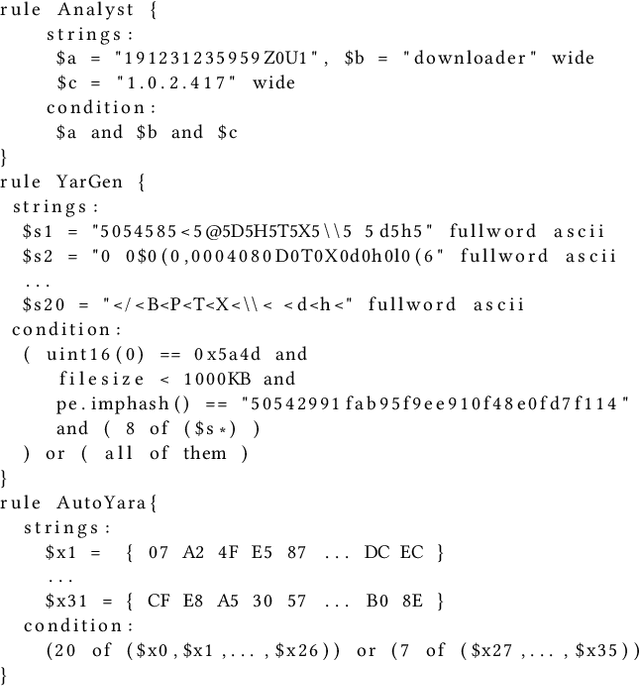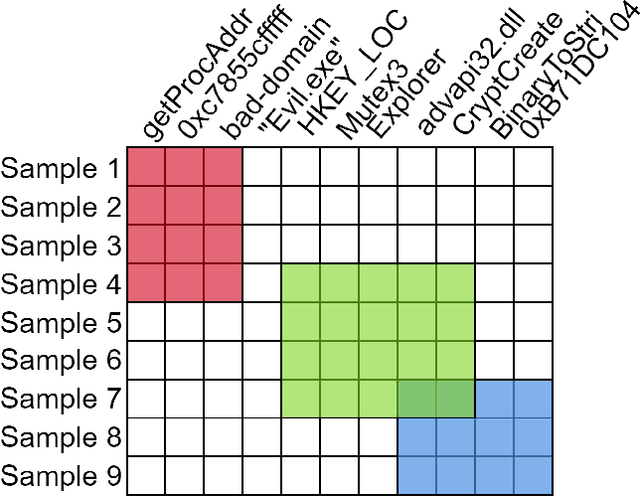Gary Lopez Munoz
Out of Distribution Data Detection Using Dropout Bayesian Neural Networks
Feb 18, 2022



Abstract:We explore the utility of information contained within a dropout based Bayesian neural network (BNN) for the task of detecting out of distribution (OOD) data. We first show how previous attempts to leverage the randomized embeddings induced by the intermediate layers of a dropout BNN can fail due to the distance metric used. We introduce an alternative approach to measuring embedding uncertainty, justify its use theoretically, and demonstrate how incorporating embedding uncertainty improves OOD data identification across three tasks: image classification, language classification, and malware detection.
Automatic Yara Rule Generation Using Biclustering
Sep 06, 2020



Abstract:Yara rules are a ubiquitous tool among cybersecurity practitioners and analysts. Developing high-quality Yara rules to detect a malware family of interest can be labor- and time-intensive, even for expert users. Few tools exist and relatively little work has been done on how to automate the generation of Yara rules for specific families. In this paper, we leverage large n-grams ($n \geq 8$) combined with a new biclustering algorithm to construct simple Yara rules more effectively than currently available software. Our method, AutoYara, is fast, allowing for deployment on low-resource equipment for teams that deploy to remote networks. Our results demonstrate that AutoYara can help reduce analyst workload by producing rules with useful true-positive rates while maintaining low false-positive rates, sometimes matching or even outperforming human analysts. In addition, real-world testing by malware analysts indicates AutoYara could reduce analyst time spent constructing Yara rules by 44-86%, allowing them to spend their time on the more advanced malware that current tools can't handle. Code will be made available at https://github.com/NeuromorphicComputationResearchProgram .
 Add to Chrome
Add to Chrome Add to Firefox
Add to Firefox Add to Edge
Add to Edge